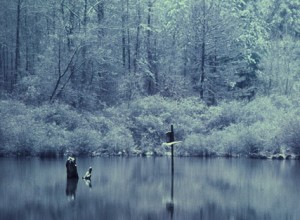 It has been an especially cold winter here in the Midwestern United States. Weeks have passed without the temperature rising above 20 degrees, electricity has failed for hours or days at a time, some schools have surpassed their allotted number of snow days… and we’d best wait three more months before we send our parkas to the drycleaners! Adding to the chill are our worries about the economy and outbreaks of violence around the globe.
It has been an especially cold winter here in the Midwestern United States. Weeks have passed without the temperature rising above 20 degrees, electricity has failed for hours or days at a time, some schools have surpassed their allotted number of snow days… and we’d best wait three more months before we send our parkas to the drycleaners! Adding to the chill are our worries about the economy and outbreaks of violence around the globe.
It takes great character and fortitude to carry on in the face of challenges and to establish new patterns of behavior or thought. Tackling whatever special challenges you face-solo parenting, job loss, diminishing investments, getting a grip on your personal health-takes a positive attitude and the courage to name and pursue your goals every day.
One of the first places where we in climates of such extreme weather can build these characteristics of strength is right outside our doors, where we can learn to experience and enjoy outdoor life no matter what the weather. Sunshine, fresh air, and exercise are imperative for good health, and the benefits of nature do not wane in winter. Outdoor enthusiasts will tell us that there’s no such thing as bad weather-just bad clothing.
For inspiration, we can look to the Scandinavians-no strangers to the adversity inherent in a part of the world that sees such harsh cold and little light during its long winters. Their term Friluftsliv, defined as “free time outdoor life” and the spirit for partaking of such in all weather, is especially celebrated in Scandinavian countries and is credited with being the source of the well-being enjoyed by much of the region’s citizens, young and old.
In fact, Denmark, Finland, and Sweden ranked among the top five countries of the world’s twenty-one richest countries for children’s well-being, according to UNICEF’s Innocenti Research Center. Aspects considered included material wellbeing, health and safety, education, peer and family relationships, behaviors and risks, and young people’s own subjective sense of well-being (see unicef.org).
Julie Catterson Lindahl, author of the 2005 book On My Swedish Island: Discovering the Secrets of Scandinavian Well-being and the mother of school-age twins, provides great inspiration for living a healthy lifestyle through her book and her continued writing at Nordicwellbeing.com and JulieLindahl.com. She encourages us to seek the outdoors as a new life habit (to promote our own health and that of the environment), as a setting for social activities, as a way to be a good role model for our children, and as a wellspring for creativity and productivity.
Just as travel sends us to distant lands and shakes up the thought patterns we’ve settled into, Friluftsliv also takes us “out of our everyday lives [and] gives us the space and perspective to develop our identities,” according to Swedish historians that Lindahl references. The curiosity and sense of wonder that both travel and the experience of nature stir in us can be found at any time in life, nurtured, and grown.
In this rough economy that we’re experiencing, when plans for travel may be placed on a back burner, nature and its gifts can be both a balm for the soul and new terrain (literally!) for us and our children to explore.
I encourage you to read On My Swedish Island for further inspiration, bundle up, and venture out! Your kids are just waiting to be invited to go sledding, build a snowman, skate on a frozen pond, or simply snap some pictures of the winter scenery. Cups of cocoa all around afterward… Cheers!
